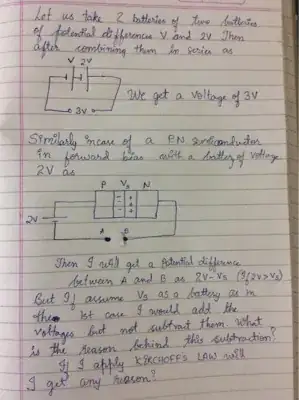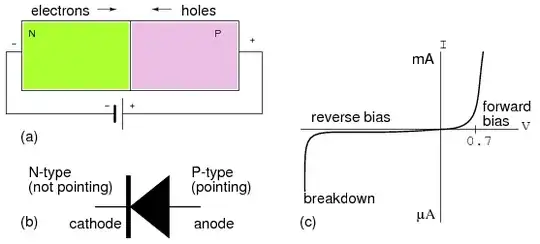Can I use the analogy of combination of two batteries to get the potential difference between two points(by applying Kirchhoff's law) in case ,if a pn junction diode is used in the place of other battery?
Consider a simple case shown in figure,there in situation 1 potential due to two batteries are added up and in situation two the the second battery is replaced by a diode in forward bias, if I apply Kirchhoff's law then moving from point AI am gaining a potential of 2V and a gain in potential V(s) in diode . In doing so what is the basic mistake I am doing?
As per Wikipedia in forward bias net voltage = 2V-Vs, but if I follow the above approach iam getting 2V+Vs.
I think about this a lot but could not get any idea.

